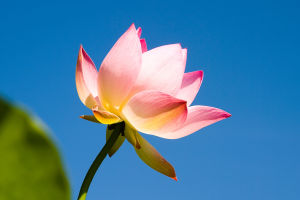Dandelions Demystified
Meet the dandelion—a humble yet remarkable plant that often gets a bad rap as a pesky weed. But don't let its common status fool you; the dandelion is packed with incredible benefits and uses that make it a true botanical gem.
From its vibrant yellow petals to its powerful health benefits, the dandelion is far more than just a lawn invader. Let’s explore why this plant deserves a place of honor in your garden and your life.
The Dandelion: A Plant with a Purpose
Dandelions are often overlooked for their resilience and versatility. Despite being labeled a weed, they have been celebrated in various cultures for their medicinal properties and culinary uses.1. The Life of a Dandelion: Dandelions (Taraxacum officinale) are native to Eurasia and North America. They’re easily recognizable by their bright yellow flowers that mature into fluffy, spherical seed heads. This unique seed dispersal mechanism is why dandelions spread so efficiently.2. Nutritional Powerhouse: Don’t let their appearance deceive you—dandelions are packed with nutrients. The entire plant, from root to flower, is edible and rich in vitamins A, C, and K, as well as minerals like iron, calcium, and potassium.
Surprising Uses of Dandelions
From the garden to the kitchen, the dandelion offers a range of practical and enjoyable uses:1. Culinary Creations:Dandelion leaves are a popular addition to salads and can be sautéed or used in soups for a nutritious boost. The roots, when roasted, make a flavorful coffee substitute.2. Herbal Remedies:Dandelion has been used in traditional medicine for centuries. The root is known for its potential liver-detoxifying properties, while the leaves are often used as a diuretic. Dandelion tea is a popular way to harness the plant’s benefits.3. Garden Benefits:Dandelions are more than just a nuisance in your lawn. Their deep taproots help break up compacted soil, and their bright flowers attract pollinators like bees. They also act as a natural mulch, suppressing weed growth in garden beds.
How to Grow and Harvest Dandelions
Curious about cultivating dandelions? Here’s a quick guide to growing and harvesting this versatile plant:1. Choose the Right Spot:Dandelions thrive in a range of soil types but prefer sunny locations. They’re incredibly hardy and can grow in almost any garden condition.2. Planting Tips:While dandelions often grow wild, you can start your own by sowing seeds directly into the soil. They require minimal care, making them an easy addition to any garden.3. Harvesting:The best time to harvest dandelions is in the spring or early summer when the leaves are tender and the flowers are vibrant. For medicinal purposes, the roots are typically harvested in the fall.
Fun Facts About Dandelions
Here are some quirky facts about dandelions that might surprise you:1. The Name Game:The name “dandelion” comes from the French term “dents de lion,” which means “lion’s teeth,” referring to the shape of the leaves.2. A Historical Favorite:Dandelions have been used in traditional medicine in various cultures for over 1,000 years. They were even mentioned in the works of ancient herbalists like Dioscorides and Galen.3. Environmental Hero:Dandelions are among the first plants to bloom in the spring, providing crucial food for early pollinators like bees and butterflies.
The dandelion is far more than just a common weed. With its impressive range of uses and benefits, this resilient plant deserves a place in your garden and your life. From its nutritional value to its medicinal properties, the dandelion offers a wealth of advantages that are worth exploring. So next time you see a dandelion, remember—this humble flower is a true powerhouse of nature, ready to brighten your garden and your health!


